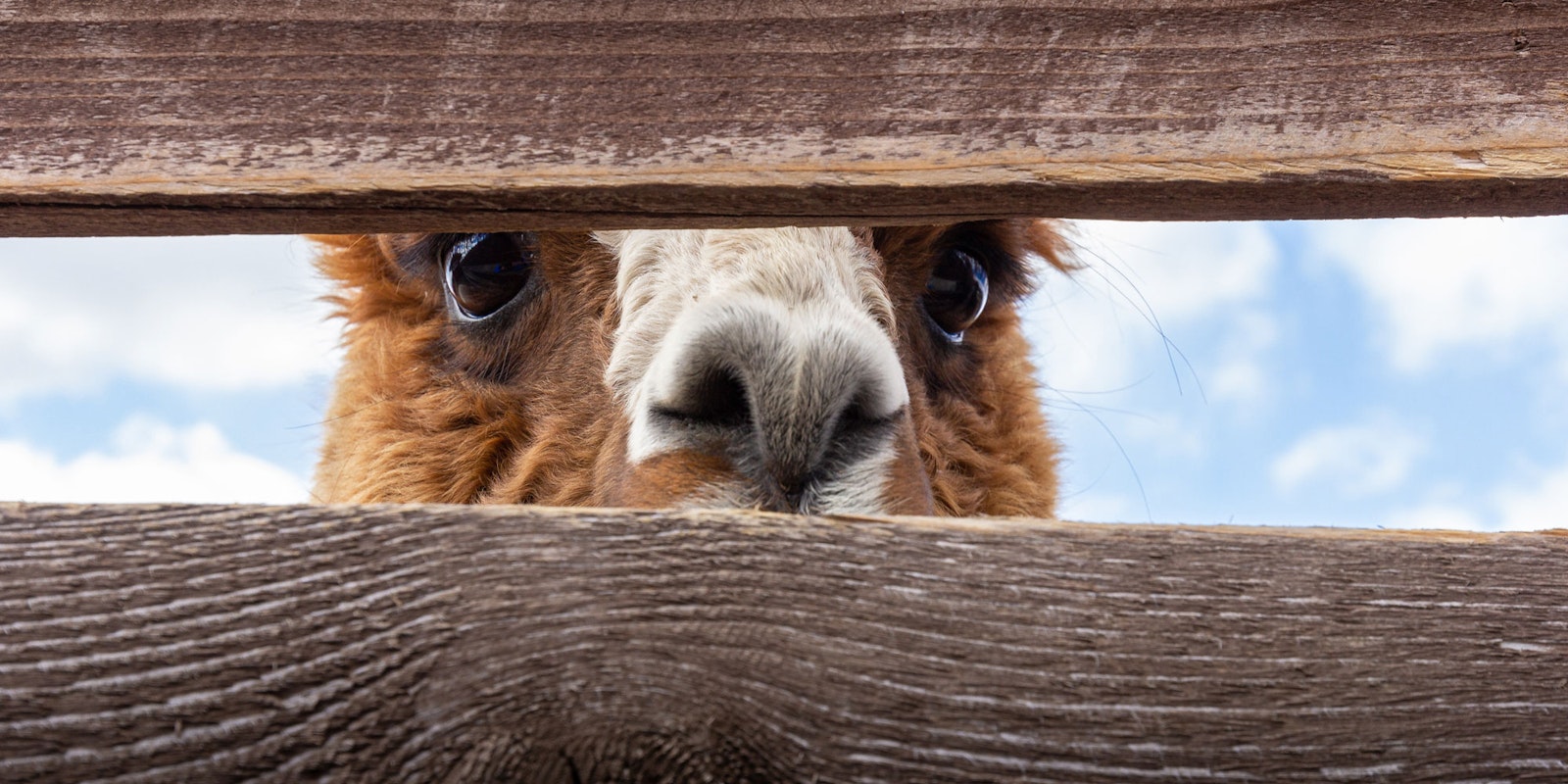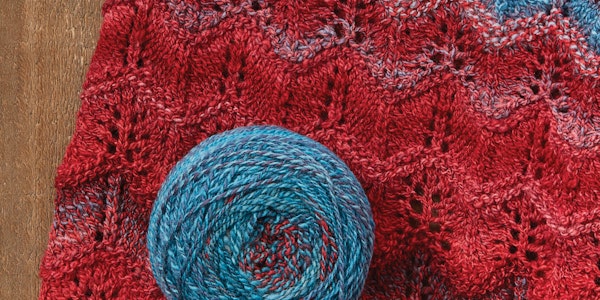Subscriber Exclusive
What to Expect When Knitting Alpaca Yarn
Whether you are working with commercially available yarn or small-batch yarns from a local alpaca grower, here are some tips to getting the most out of your alpaca projects.
Whether you are working with commercially available yarn or small-batch yarns from a local alpaca grower, here are some tips to getting the most out of your alpaca projects. <a href="https://farmfiberknits.com/what-to-expect-when-knitting-alpaca-yarn/">Continue reading.</a>
https://www.datocms-assets.com/101500/1691968870-joakim-honkasalo-header.jpg?auto=format&w=900
For the uninitiated knitter, alpaca yarns can be intimidating and mysterious. Anyone who has browsed in a local yarn shop knows that those seductively soft skeins containing alpaca fiber are rare and expensive. But don’t let the mystery keep you from a sumptuous knitting experience.
Alpacas are small camelids originally from South America and can be found all over the world. They are unforgettably cute creatures, resembling a stack of marshmallows with huge, dewy eyes. There are two kinds of alpaca fibers: huacaya (wah-KY-ah), a dense, soft, crimpy fiber, and the rarer suri (SOO-ree), a silky fiber that grows in pencil-thin locks that resemble silk ribbons. Because suri fiber is so rare, you can assume that most yarns containing alpaca will be made from huacaya fiber unless the label specifies otherwise.
Benefits of Alpaca Yarn
Alpaca is beautifully fine, dense, soft, and smooth to the touch. It is also very warm and lustrous. The lack of lanolin makes alpaca a hypoallergenic option for those with sensitive skin. Alpaca comes in a variety of natural colors, from pure black to white, with silver grays and creamy browns. Dyed alpaca is available in an assortment of warm, earthy tones, pastels, and deep and bright hues.
SUBSCRIBER EXCLUSIVE
For the uninitiated knitter, alpaca yarns can be intimidating and mysterious. Anyone who has browsed in a local yarn shop knows that those seductively soft skeins containing alpaca fiber are rare and expensive. But don’t let the mystery keep you from a sumptuous knitting experience.
Alpacas are small camelids originally from South America and can be found all over the world. They are unforgettably cute creatures, resembling a stack of marshmallows with huge, dewy eyes. There are two kinds of alpaca fibers: huacaya (wah-KY-ah), a dense, soft, crimpy fiber, and the rarer suri (SOO-ree), a silky fiber that grows in pencil-thin locks that resemble silk ribbons. Because suri fiber is so rare, you can assume that most yarns containing alpaca will be made from huacaya fiber unless the label specifies otherwise.
Benefits of Alpaca Yarn
Alpaca is beautifully fine, dense, soft, and smooth to the touch. It is also very warm and lustrous. The lack of lanolin makes alpaca a hypoallergenic option for those with sensitive skin. Alpaca comes in a variety of natural colors, from pure black to white, with silver grays and creamy browns. Dyed alpaca is available in an assortment of warm, earthy tones, pastels, and deep and bright hues. [PAYWALL]
Alpaca yarns come in a variety of weights and plies, from fine singles to bulky and beyond. Suri yarn is available in the finer yarn weights, such as lace, and feels a bit like angora rabbit with the texture of mohair.
The stitch definition can be good to moderate depending on the structure of the yarn. For example, brushed alpaca yarn is cozy and cloud-like. Fabric knitted from this yarn will be lightweight and fuzzy, with little stitch definition.
 Two alpaca blends highlight different properties of the fiber. At left, a small amount of wool lends memory to the luster and drape of huacaya alpaca. At right, the mulberry silk binder adds stability and even more shine to a halo of baby suri in this brushed yarn. Photo by Matt Graves
Two alpaca blends highlight different properties of the fiber. At left, a small amount of wool lends memory to the luster and drape of huacaya alpaca. At right, the mulberry silk binder adds stability and even more shine to a halo of baby suri in this brushed yarn. Photo by Matt Graves
Although pure alpaca is wonderful for most knitting projects, it is often blended with other fibers to improve its durability and counter its tendency to over-drape. Silk, wool, mohair, and acrylic are all popular blends.
Alpaca Yarn Challenges
Alpaca has strong draping qualities, which is both a blessing and a curse. Alpaca is elastic, meaning that it stretches, but its memory (ability to spring back after being stretched) is limited. The key to avoiding an ill-fitting, saggy garment is to swatch before you start to determine the right gauge. As a general rule, the tighter the swatch, the stiffer the fabric.
Because it is a delicate fiber on its own, it may not be suitable for knits that need to be hardwearing, such as socks. Blended alpaca yarns or alpaca held double with another yarn of a different fiber can add much-needed durability.
If given the opportunity, alpaca can felt. Garments are best dry-cleaned or gently handwashed to avoid felting. While it does not pill, it does tend to shed lightly.
It may come as a surprise, but alpaca can feel somewhat prickly or itchy. The most likely cause for prickle factor is the presence of guard hairs and high-micron primary (coarse) fibers found in older alpacas. Alpaca fleeces tend to grow coarser with age, and it is important to patronize yarn companies or local alpaca farms that source only the finest fleeces for their alpaca yarn batches.
 Besides three lovely shades of natural alpaca colors, this skein of yarn displays long, wiry guard hairs that can make it itchy when knitted up. Photo by Jacqueline Harp
Besides three lovely shades of natural alpaca colors, this skein of yarn displays long, wiry guard hairs that can make it itchy when knitted up. Photo by Jacqueline Harp
Buying the Best Alpaca Yarn
Word-of-mouth or in-person shopping options like visiting a farmstand or local yarn shop are both good ways to find high-quality alpaca yarns. Being able to see and feel the yarns in person can help you avoid purchasing a yarn that is made from low-quality alpaca. Check it for guard hairs. These hairs look a lot like human hairs, and if you see an abundance of them sticking out of a skein, leave it at the yarn shop. Another tip to avoid prickly fiber is to look for alpaca yarn labels with the terms royal, baby, superfine, and fine adult. Also look for the word “dehaired,” which means that the fibers were run through a specialized machine that removes coarse hairs.
Not all is lost, however, if you inadvertently knitted a prickly garment. If you have the time, you can take a pair of tweezers and carefully pick out the coarser fibers from your fabric. You won’t be able to pick out everything, but it can make the knit more wearable.
Project Suggestions
Smaller projects such as fingerless gloves, hats, ands scarves that require a bit of strength are great for alpaca blend yarns. Medium-sized projects like shawls and wraps can really benefit from the elegance and drape that pure alpaca yarns provide. For items that need next-to-the-skin softness, such as a cowl, use only the finest yarns to avoid prickle factor.
In my experience, sweaters knitted from pure alpaca yarns will likely become shapeless sacks, especially in the sleeves. If you want to knit an alpaca sweater that keeps its shape, go for a blend with just enough alpaca to make it feel soft without taking away from the wearability of the fabric.
Alpaca is, without a doubt, a luxury fiber. Once you understand its characteristics and know what to look for in a yarn, you can knit alpaca with confidence and indulge in the warmth and extravagance.
Jacqueline Harp is a freelance writer and multimedia fiber artist who spins, felts, weaves, crochets, and knits in every spare moment possible. She is a former certified Master Sorter of Wool Fibers through the State University of New York (SUNY Cobleskill) Sorting-Grading-Classing (SGC) program. Find her on Instagram: @foreverfiberarts



 Two alpaca blends highlight different properties of the fiber. At left, a small amount of wool lends memory to the luster and drape of huacaya alpaca. At right, the mulberry silk binder adds stability and even more shine to a halo of baby suri in this brushed yarn. Photo by Matt Graves
Two alpaca blends highlight different properties of the fiber. At left, a small amount of wool lends memory to the luster and drape of huacaya alpaca. At right, the mulberry silk binder adds stability and even more shine to a halo of baby suri in this brushed yarn. Photo by Matt Graves Besides three lovely shades of natural alpaca colors, this skein of yarn displays long, wiry guard hairs that can make it itchy when knitted up. Photo by Jacqueline Harp
Besides three lovely shades of natural alpaca colors, this skein of yarn displays long, wiry guard hairs that can make it itchy when knitted up. Photo by Jacqueline Harp